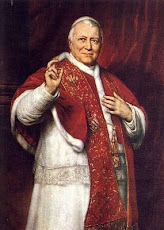Antonio Martin y Coll.
I. Diferencias sobre las Folias.
Jordi Savall.
Rolf Lislevand.
Arianna Savall.
Pedro Estevan.
Dir: Jordi Savall.
Anonymous: La Folia.
Jordi Savall.
Rolf Lislevand.
Arianna Savall.
Pedro Estevan.
Dir: Jordi Savall.
Over the course of three centuries, more than 150 composers have used it in their works. The first publications of this theme date from the middle of the 17th century, but it is probably much older. Plays of the renaissance theatre in Portugal, including works by Gil Vicente, mention the folia as a dance performed by shepherds or peasants. The Portuguese origin is recorded in the 1577 treatise De musica libri septem by Francisco de Salinas.
Examples of early folias include works by Juan del Enzina in 1520, Diego Ortiz in 1553, and Antonio de Cabezón in 1557. Jean-Baptiste Lully, in collaboration with Philidor in 1672, Arcangelo Corelli in 1700, Alessandro Scarlatti in 1710, Antonio Vivaldi in his Opus 1 No 12 of 1705 and Johann Sebastian Bach in his Peasants' Cantata of 1742 are considered to highlight this 'later' folia repeating theme in a brilliant way.
In the 19th century the theme's popularity decreased, but it regained composers' interest during the 1930s with Sergei Rachmaninov in his Variations on a theme by Corelli in 1931 and Manuel María Ponce and his Variations on "Spanish Folia" and Fugue for guitar. Since then, it has been frequently used by various composers, such as by Vangelis for the film Conquest of Paradise.
The folia melody has also influenced Scandinavian folk music. It is said that around half of the old Swedish tunes are based on la folia. It is possible to recognize a common structure in many Swedish folk tunes, and it is similar to the folia structure. Old folk tunes (19th century or older) which do not have this structure often come from parts of Sweden with little influences from upper classes or other countries.
Anonymous: Canarios.
Jordi Savall.
Rolf Lislevand.
Arianna Savall.
Pedro Estevan.
Dir: Jordi Savall.
Jordi Savall.
Rolf Lislevand.
Arianna Savall.
Pedro Estevan.
Dir: Jordi Savall.
Over the course of three centuries, more than 150 composers have used it in their works. The first publications of this theme date from the middle of the 17th century, but it is probably much older. Plays of the renaissance theatre in Portugal, including works by Gil Vicente, mention the folia as a dance performed by shepherds or peasants. The Portuguese origin is recorded in the 1577 treatise De musica libri septem by Francisco de Salinas.
Examples of early folias include works by Juan del Enzina in 1520, Diego Ortiz in 1553, and Antonio de Cabezón in 1557. Jean-Baptiste Lully, in collaboration with Philidor in 1672, Arcangelo Corelli in 1700, Alessandro Scarlatti in 1710, Antonio Vivaldi in his Opus 1 No 12 of 1705 and Johann Sebastian Bach in his Peasants' Cantata of 1742 are considered to highlight this 'later' folia repeating theme in a brilliant way.
In the 19th century the theme's popularity decreased, but it regained composers' interest during the 1930s with Sergei Rachmaninov in his Variations on a theme by Corelli in 1931 and Manuel María Ponce and his Variations on "Spanish Folia" and Fugue for guitar. Since then, it has been frequently used by various composers, such as by Vangelis for the film Conquest of Paradise.
The folia melody has also influenced Scandinavian folk music. It is said that around half of the old Swedish tunes are based on la folia. It is possible to recognize a common structure in many Swedish folk tunes, and it is similar to the folia structure. Old folk tunes (19th century or older) which do not have this structure often come from parts of Sweden with little influences from upper classes or other countries.
Anonymous: Canarios.
Jordi Savall.
Rolf Lislevand.
Arianna Savall.
Pedro Estevan.
Dir: Jordi Savall.

































































2 comentarios:
Querido Cruzamante.
Muchas garcias por la hermosa música.
A veces me pregunto si los que no somos parte de la masa que ha homogenizado no menos de un 95 % de la población toda, agradecemos suficientemente el conservar la individualidad, el buen gusto y la dignidad.
A una persona como usted le parecería impensado, pero la mayoría de la gente no podría escuchar enteras las hermosas interpretaciones de estos músicos.
Qué vida desastroza, pobre gente !
Qué naturalidad la de los músicos, qué bellas las expresiones de sus rostros, qué a gusto se los puede ver ante lo bello.
Qué afortunados somos por partida doble, pues disfrutar de lo bello hoy es para una muy marcada minoría y además es más barato.
Un abrazo en Xto.
El Carlista.
Carísimo Carlista:
Le agradezco mucho su comentario, pues siempre me pregunto si la música publicada le gustó a alguien (nadie comenta nada).
Conque a uno le guste me doy por bien pagado.
Como ya somos dos los que disfrutamos, esta tarde publico algo más de música del 1500.
Un abrazo en Xto Rey
Cruzamante
Publicar un comentario